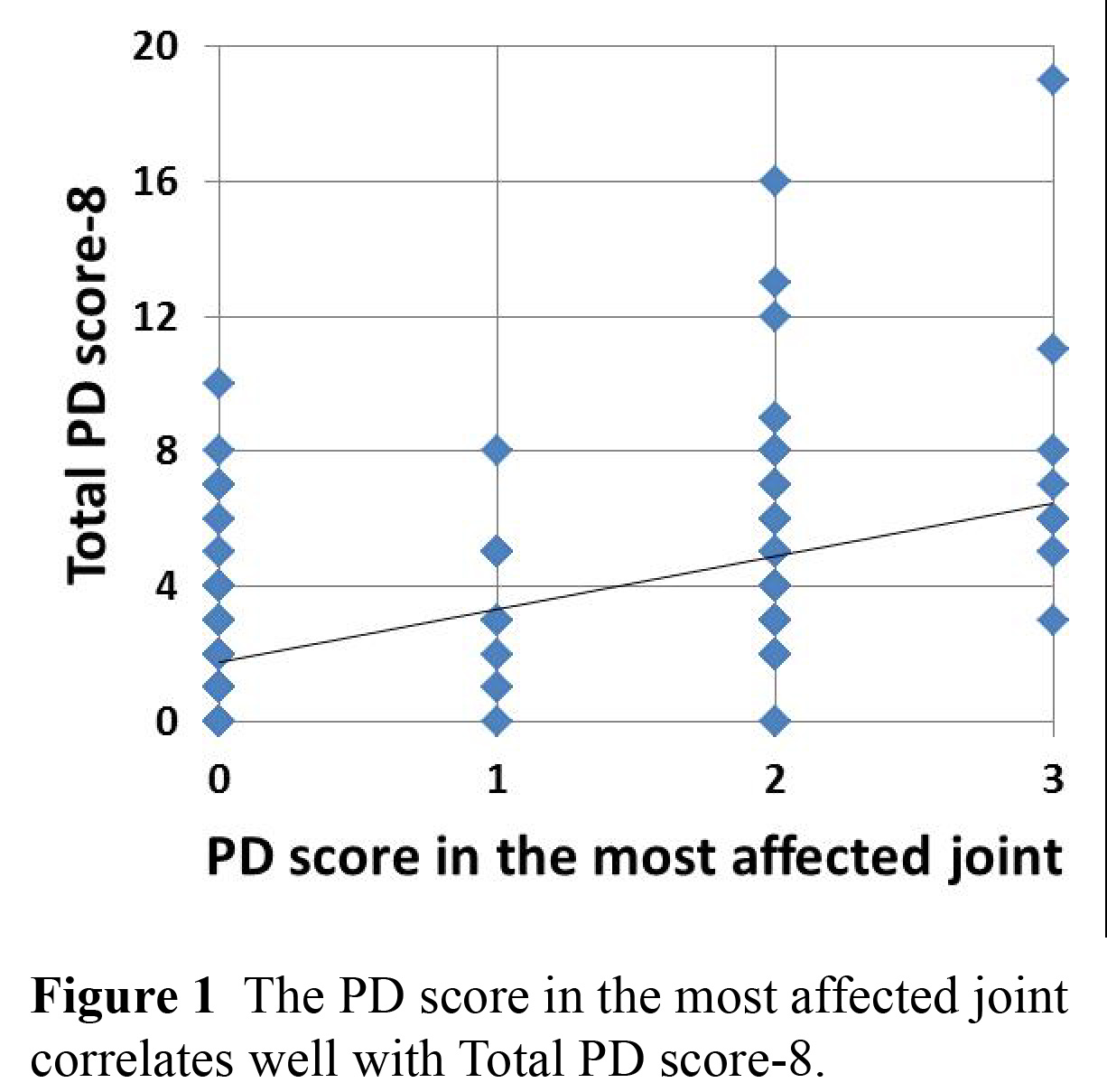Session Information
Session Type: Abstract Submissions (ACR)
Background/Purpose: Musculoskeletal ultrasonography (US) is recognized as a useful tool for the diagnosis and monitoring of rheumatoid arthritis (RA). Although several sets of power Doppler (PD) US assessment procedures in arbitrary combinations of selected joints have been proposed, they do not always cover all of the affected joints. Here we investigated whether US assessment in a selected joint on demand from patients is useful for monitoring RA in daily practice.
Methods: PDUS was performed in 8 joints, including bilateral MCP 2, MCP 3, wrist and knee joints, as a routine examination in a cumulative total of 207 patients with RA. At the examination, patients declared the most symptomatically affected joint. In patients who had the most affected joint except the routine 8 joints, the joint was additionally scanned. PD signals were scored semiquantitatively from 0 to 3 in each joint, and total PD score-8 was calculated by summing up PD scores of the routine 8 joints. Patients with positive PD signals in any joints were regarded as having active synovitis. The sensitivity and specificity of assessment in the most affected joint for detection of active synovitis in any of the routine 8 joints were evaluated.
Results: The patients were divided into three groups based on the most affected joints. Group A consisted of 110 patients having the most affected joint among the routine 8 joints, whereas 69 patients having the most affected joint other than the routine 8 joints were included in Group B. The remaining 28 patients were asymptomatic and categorized into Group C. Total PD score-8 was significantly higher in the symptomatic groups (Group A and B) than the asymptomatic group (Group C) (3.41 ± 3.19 vs 1.25 ± 1.80, P = 5.9 x 10-4). In the symptomatic groups, PD scores of the most affected joints showed high correlation with total PD score-8 (Figure 1; r = 0.52, P = 5.8 x 10-14). For detection of active synovitis of any of the routine 8 joints, the sensitivity and specificity of assessment in the most affected joint were 66.2% and 94.6%, respectively, in the symptomatic groups (Group A and B), 82.6% and 100%, respectively, in Group A, and 36.0% and 89.5%, respectively, in Group B. In two patients (2.9%) who were classified into Group B, PD signals were detected in the most affected joints (left ankle and right elbow), despite the negative results in the routine 8 joint assessments. These data suggested that US finding in the most affected joint represents those of routine 8 joint examination in Group A, whereas it gives supplemental information to the routine 8 joint examination in Group B.
Conclusion: This study suggests that on-demand US assessment in the most affected joint is efficient for management of RA patients in daily practice.
Disclosure:
R. Yoshimi,
None;
T. Mitsuhiro,
None;
Y. Toyota,
None;
N. Tsuchida,
None;
Y. Sugiyama,
None;
Y. Kunishita,
None;
D. Kishimoto,
None;
R. Kamiyama,
None;
K. Minegishi-Takase,
None;
M. Hama,
None;
Y. Kirino,
None;
A. Ueda,
None;
Y. Ishigatsubo,
None.
« Back to 2014 ACR/ARHP Annual Meeting
ACR Meeting Abstracts - https://acrabstracts.org/abstract/on-demand-ultrasonography-assessment-in-the-most-affected-joint-is-efficient-for-management-of-ra-patients-in-daily-practice/

